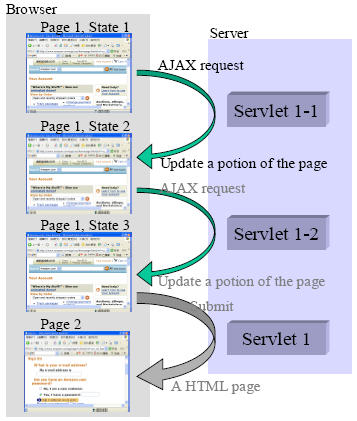Over a decade of evolution, Web applications have evolved from static HTML pages to Dynamic HTML pages, from applets to Flash, and finally to AJAX[1] technologies (Asynchronous JavaScript and XML). Illustrated by Google Maps and Suggest, AJAX breaths new life into Web applications by delivering the same level of interactivity and responsiveness as desktop applications do. Unlike applets or Flash, AJAX is based on the standard browser and JavaScript with no proprietary plugins required.

AJAX is a kind of new generation DHTML. Like DHTML, it heavily relies on JavaScript to listen to events triggered by user's activity, and then manipulate visual presentation of a page (aka. DOM) in the browser dynamically. Moreover, it takes a step further by enabling communication with the server asynchronously without leaving or rendering the whole page again. It breaks the page-based model by introducing light-weight communication between clients and servers. With proper design AJAX could bring rich components, common to desktop applications, to life in Web applications allowing dynamic updates and more control over the application.
When providing the interactivity that users demand, AJAX adds more complexities and skill prerequisites to the already costly development of Web applications. Developers have to manipulate DOM in the browser and communicate with the server via incompatible and even buggy JavaScript APIs. For better interactivity developers have to replicate application data and business logic in the browser, increasing maintenance costs and the challenge of synchronizing data between the server and the client.
The bottom line is that ad hoc AJAX applications are no different from traditional Web applications in regards to the way processes are requested. Developers still have to fill the gap caused by the page-based and stateless model.